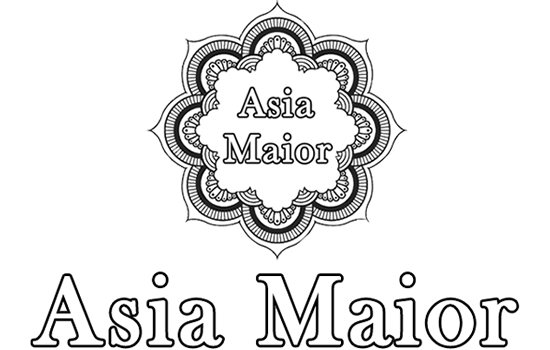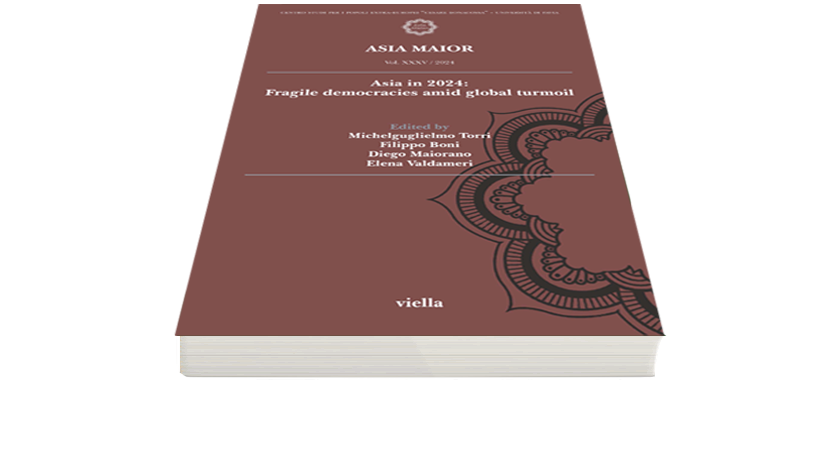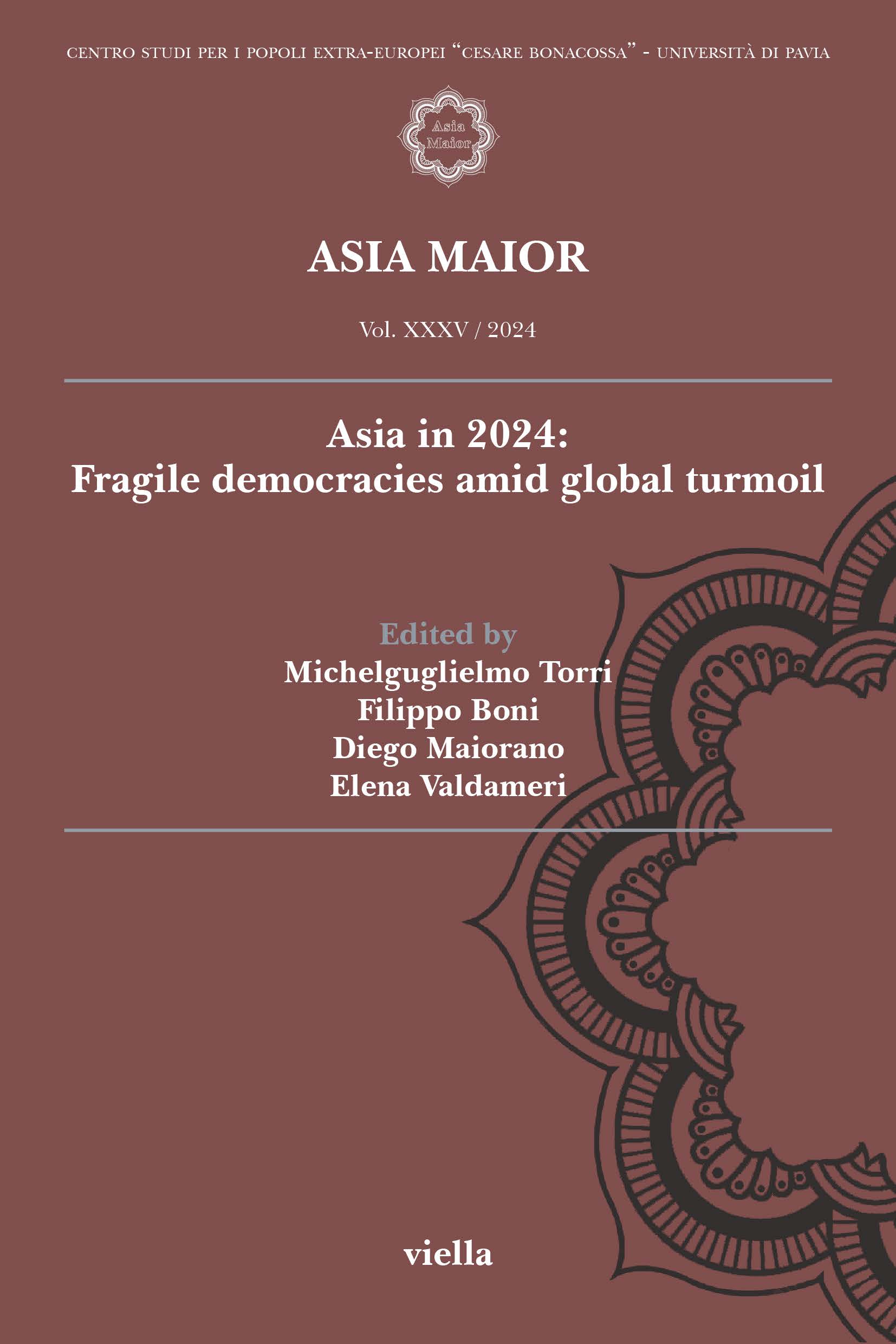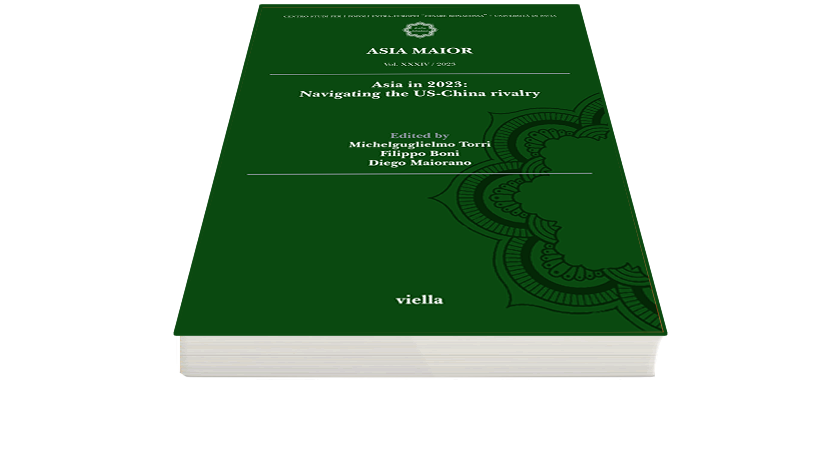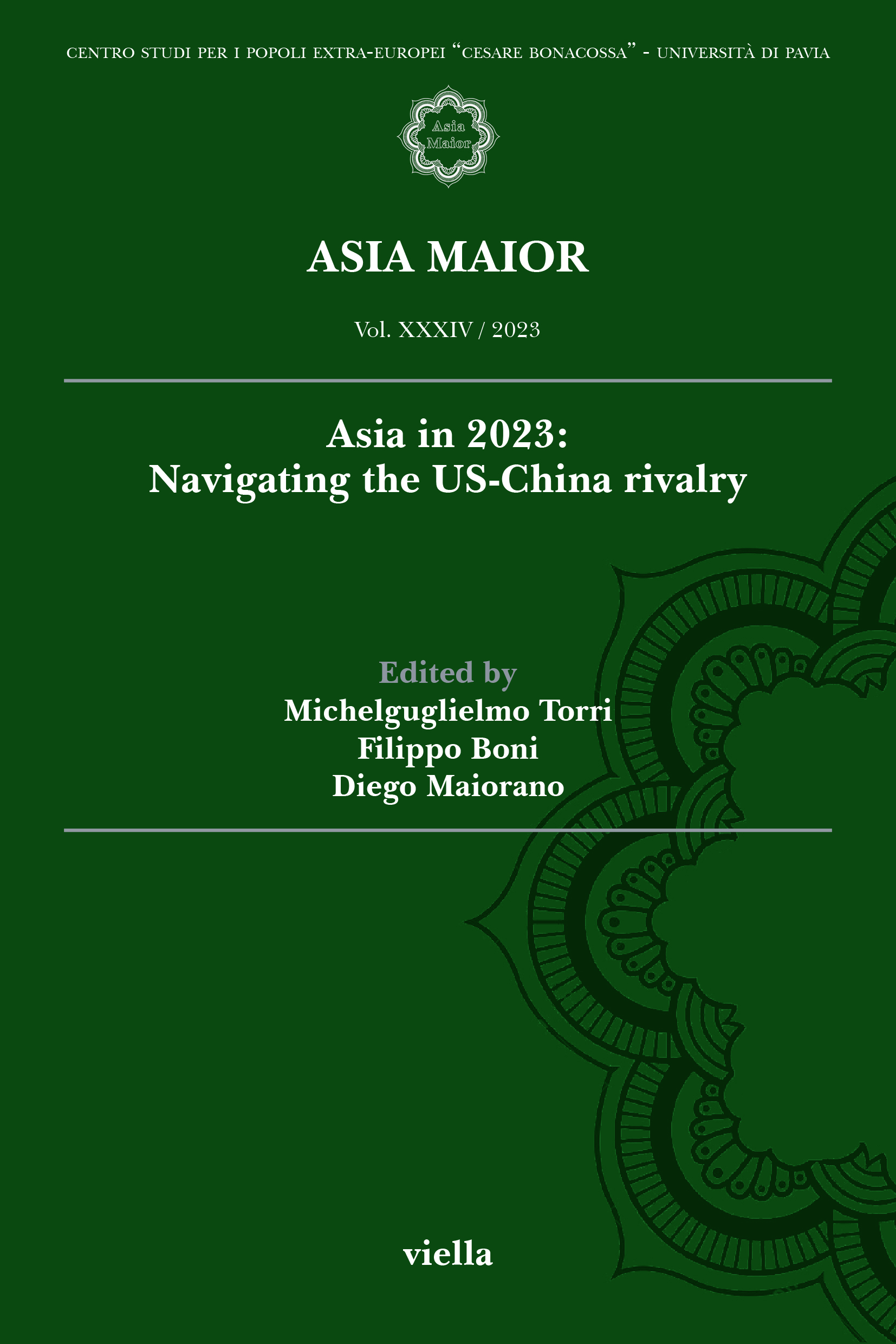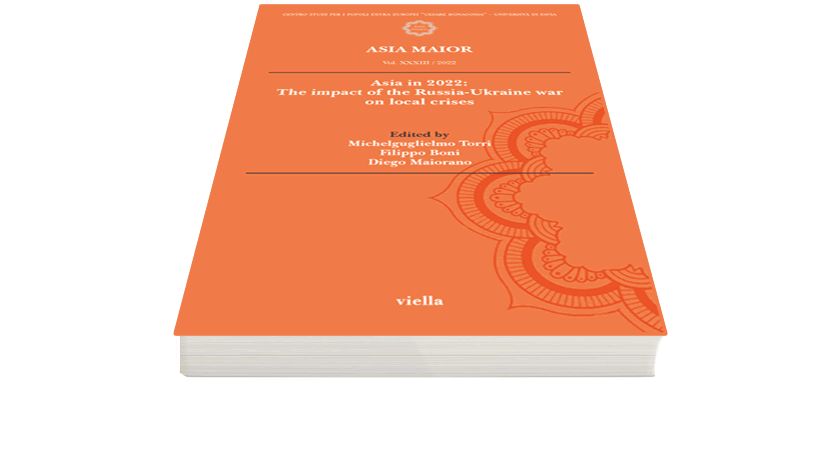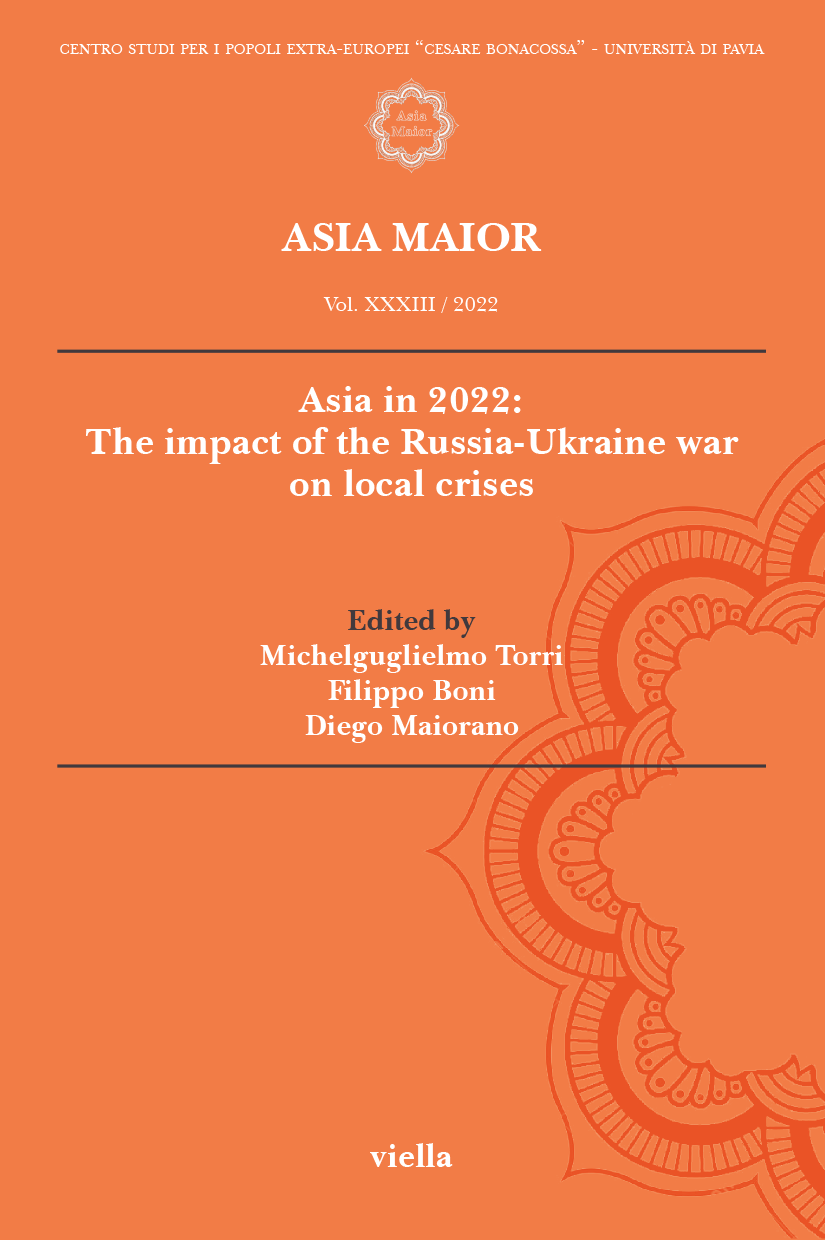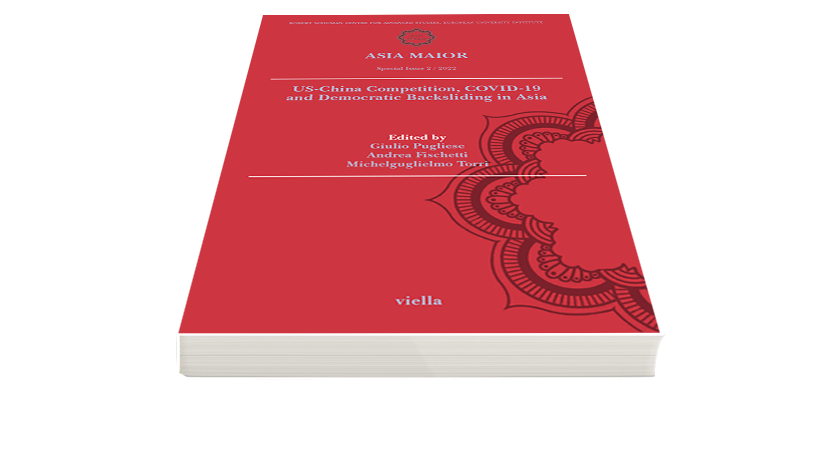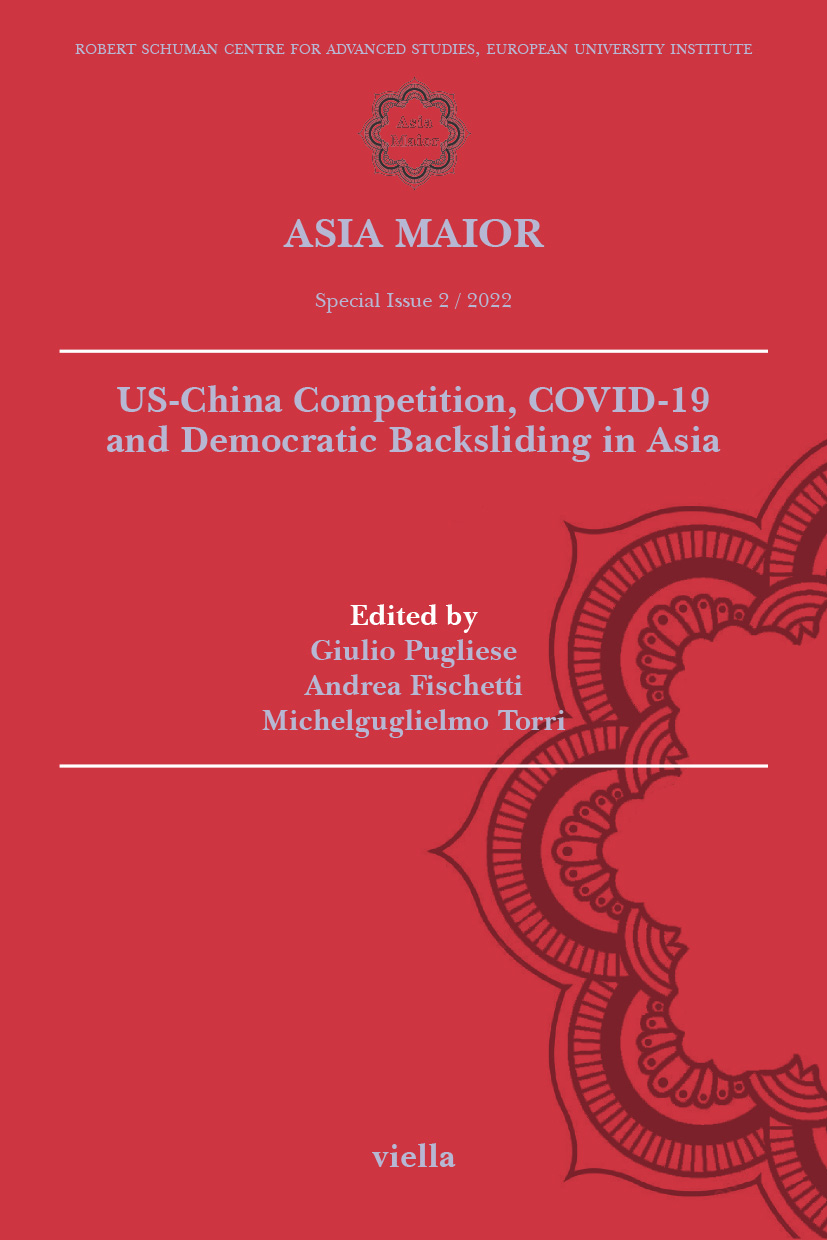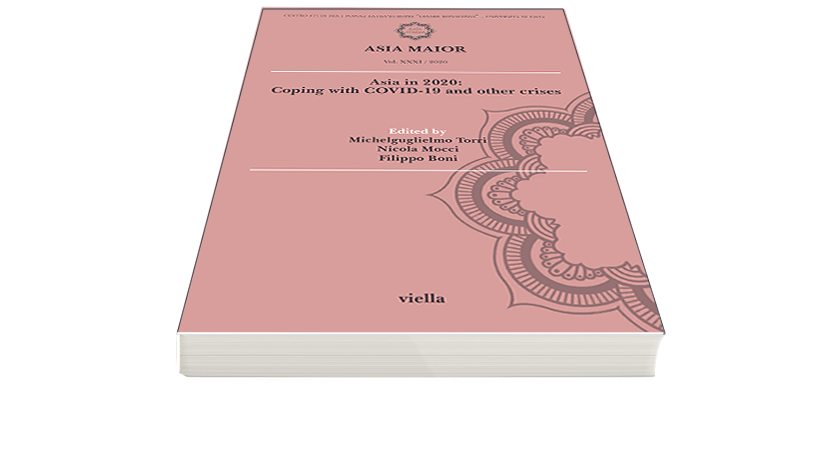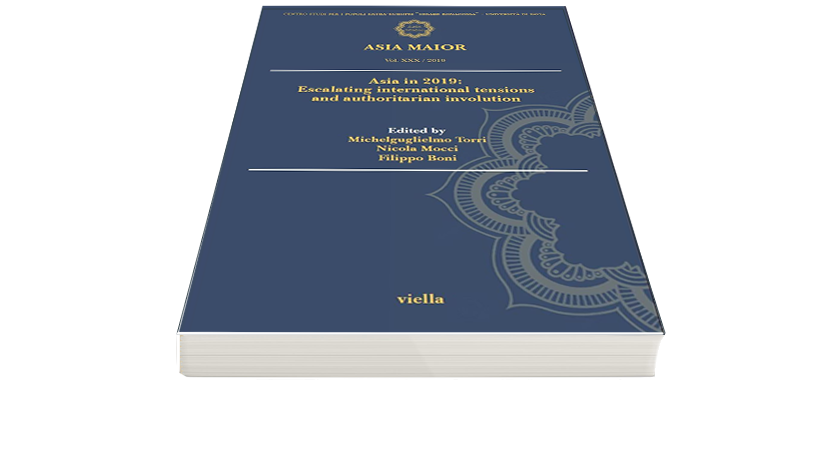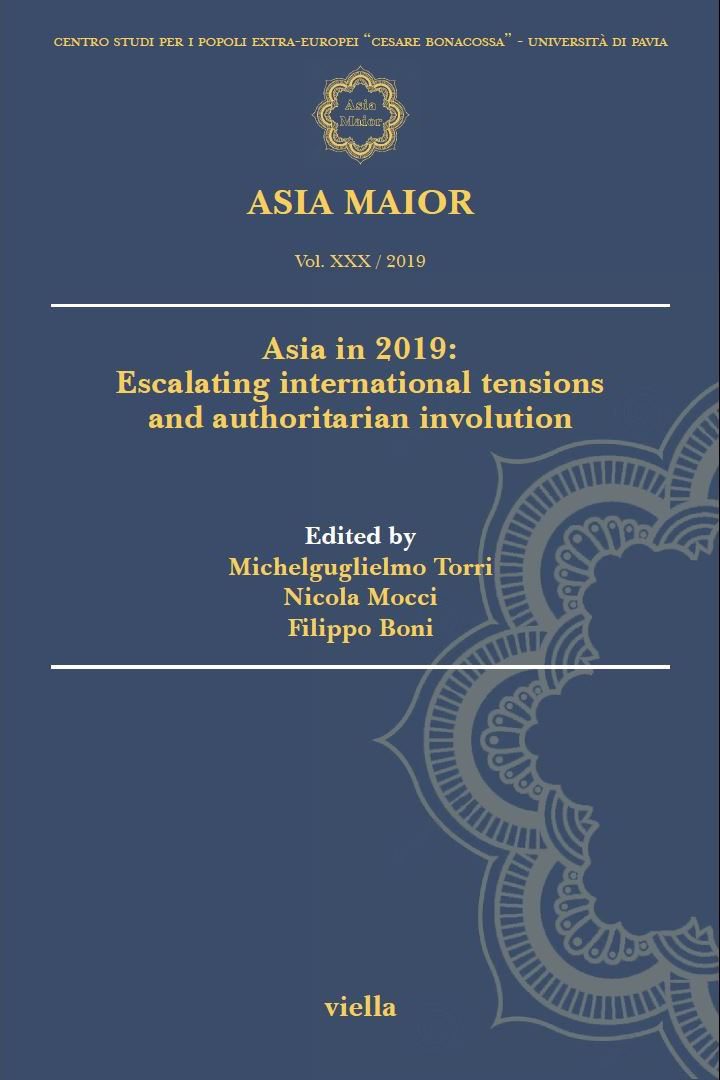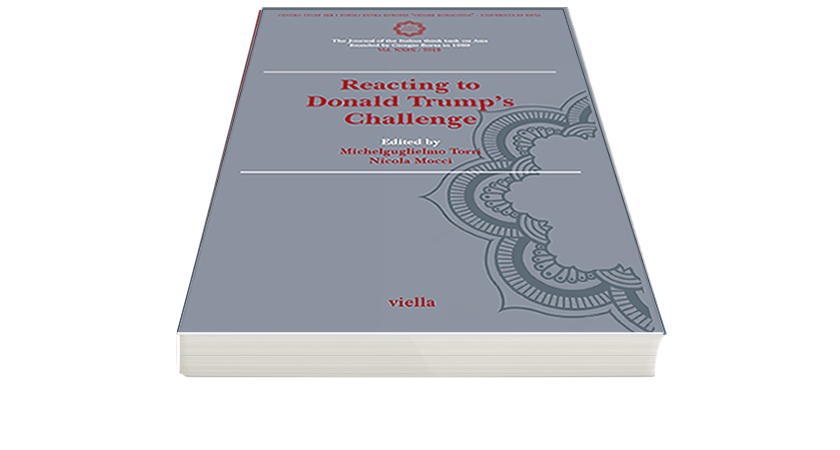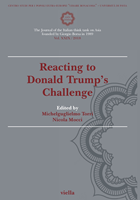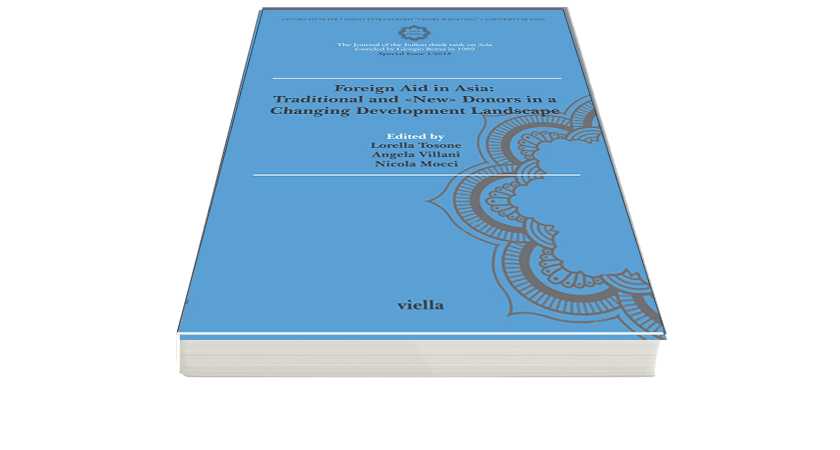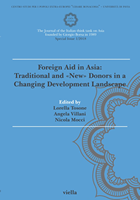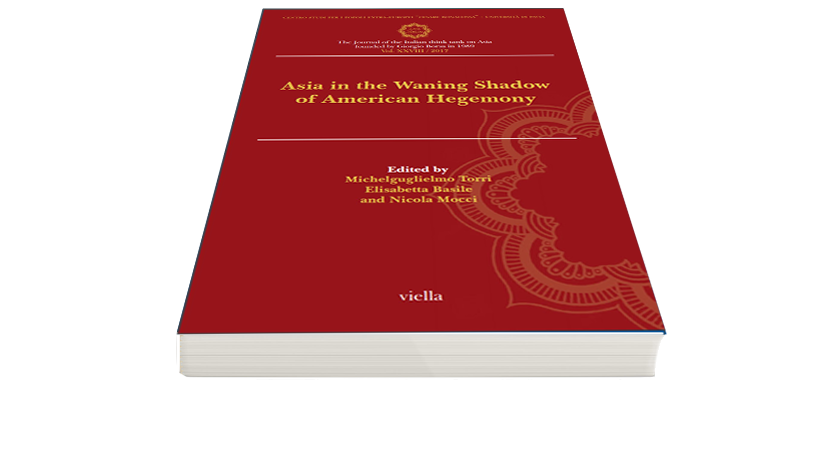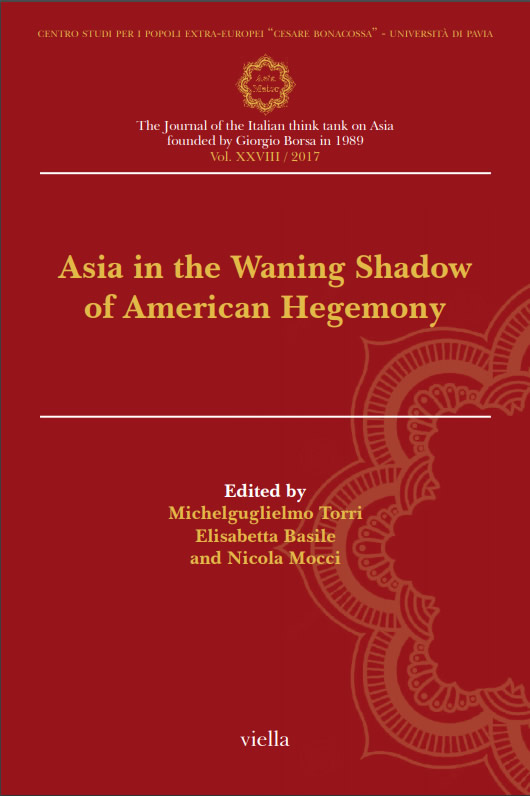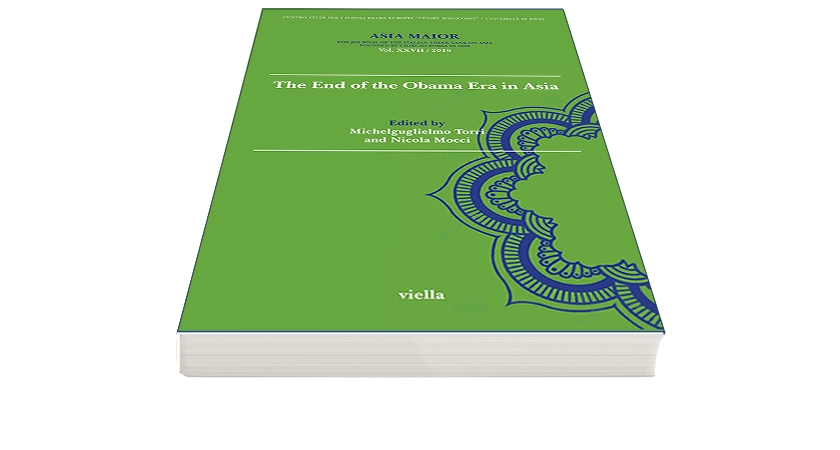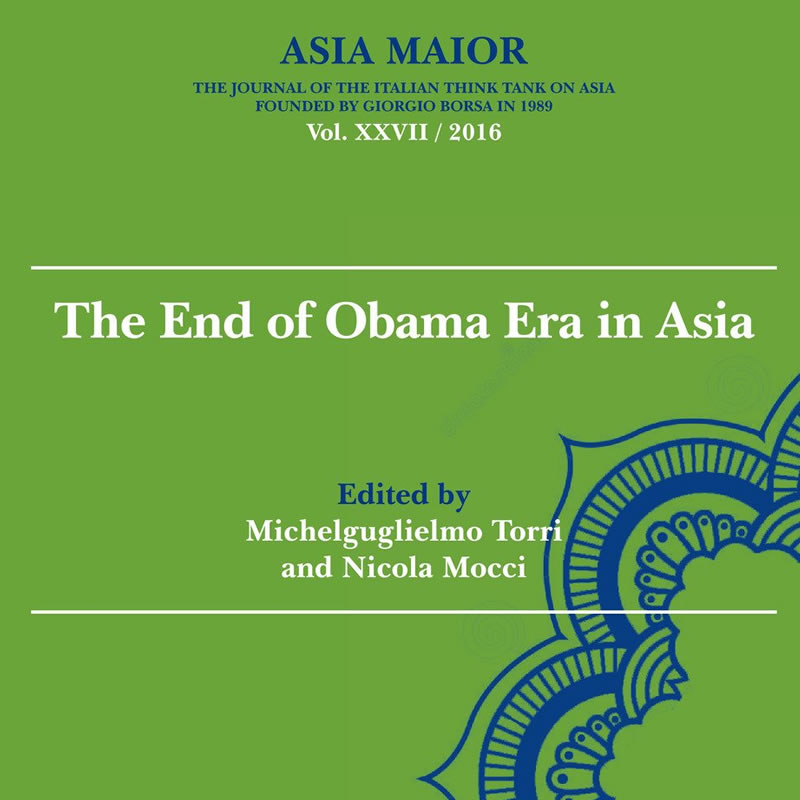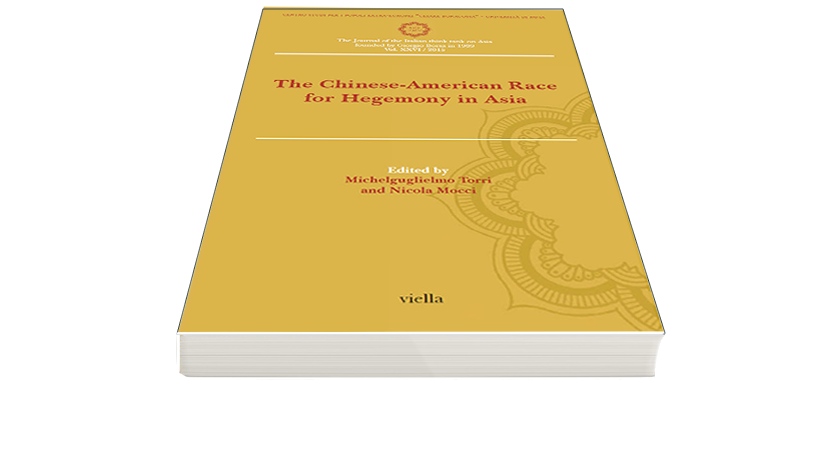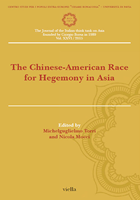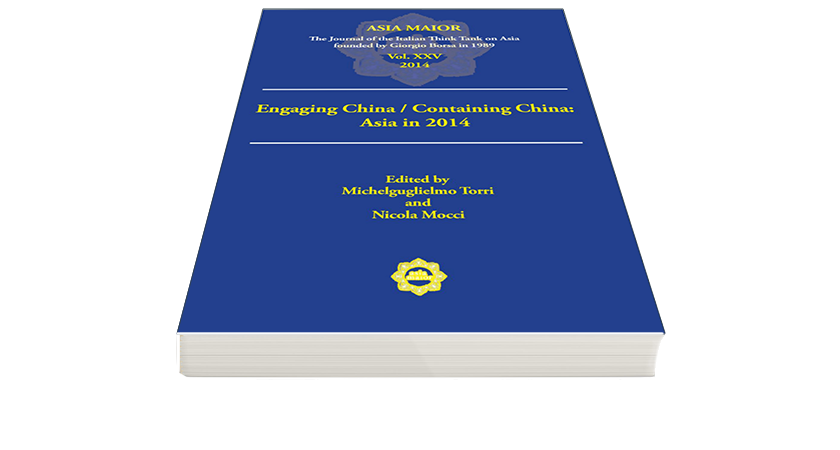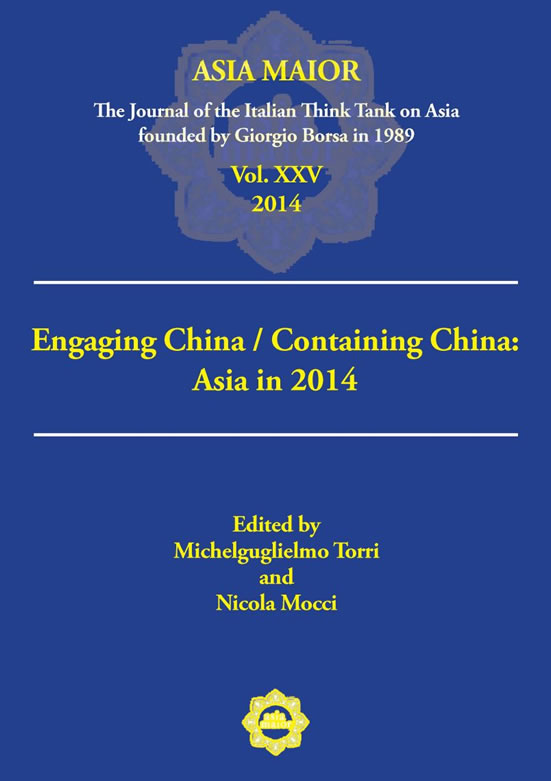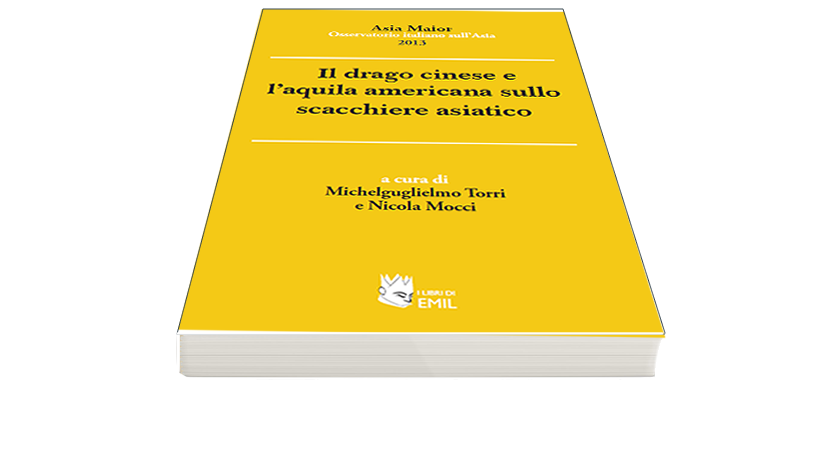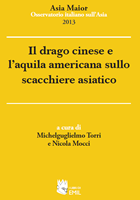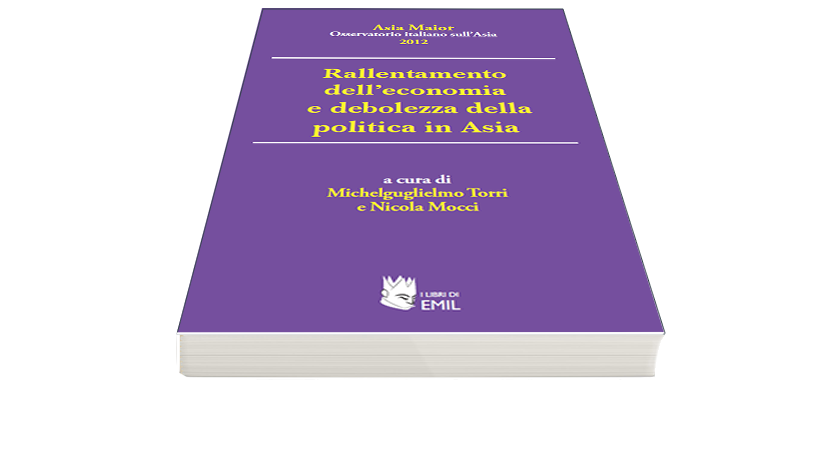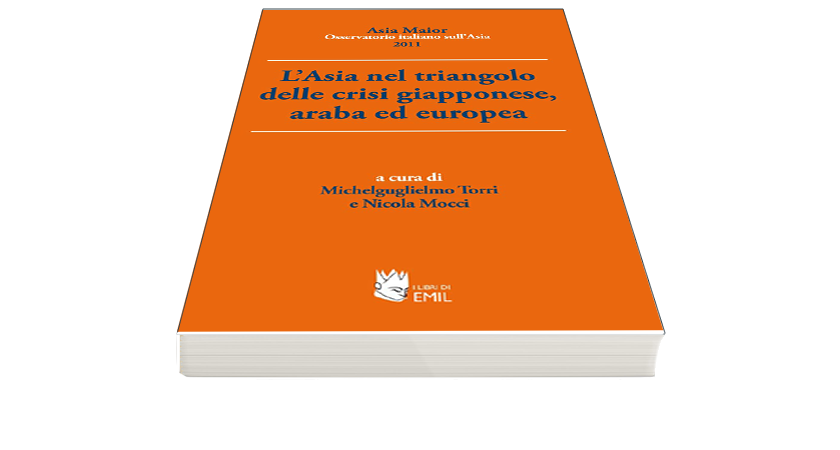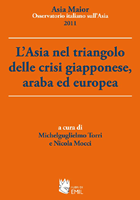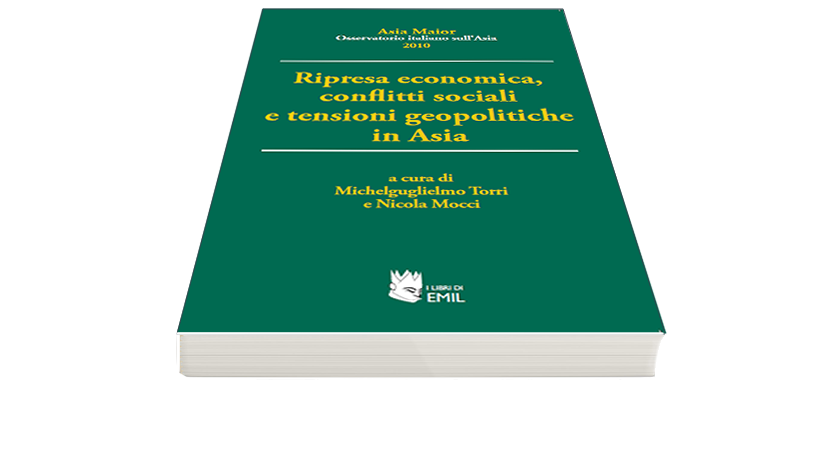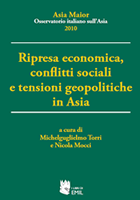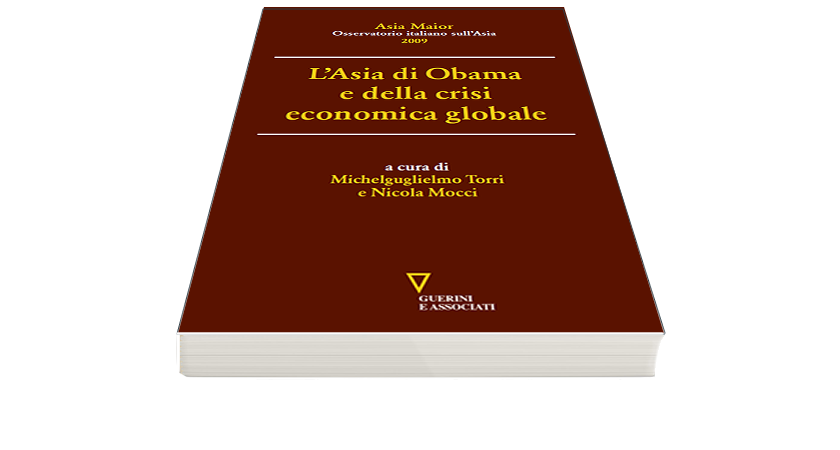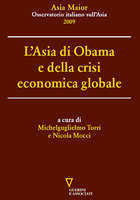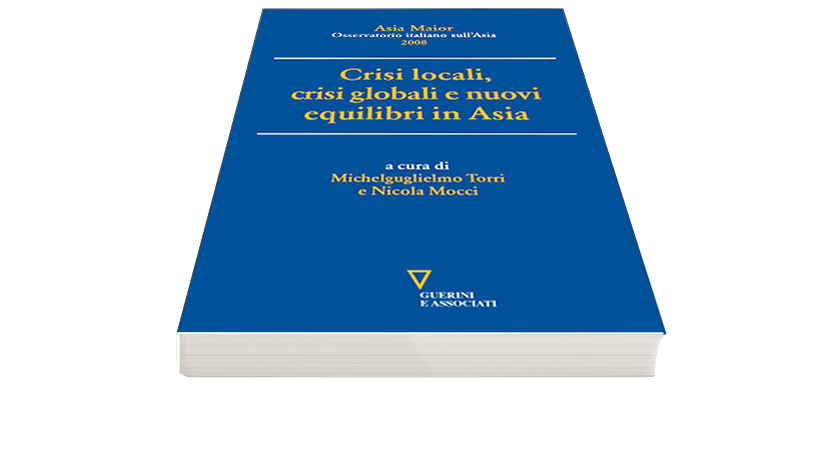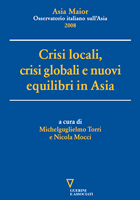Timor-Leste 2024: In a changing geopolitical environment, reconciliation as a central pillar*
Available also in pdf – Download Pdf
Like 2023, 2024 was a year of intense diplomatic activity, with two old hands in politics and international relations, José Ramos-Horta and Xanana Gusmão, returning to top government posts. A large part of foreign relations was focused on the prospect of ASEAN membership, following acceptance in principle by the member states in November 2022. Another pinnacle of diplomatic life was the election to the Indonesian presidency of Prabowo Subianto, a general whose 20-year career is inextricably linked to the Indonesian occupation of Timor-Leste (1975-1999). In the year under review, the political leaders of the two countries chose to manage this major change with a high dose of pragmatism, emphasising the ongoing peaceful normalisation of bilateral relations and further promoting the notion of Reconciliation. Admittedly, there were still some issues waiting for resolution between the two countries, such as the final settlement of land borders. The country’s heightened profile was also due to a series of major international events, such as Pope Francis’ visit to Dili. Rejecting the logic of blocs, Timor-Leste raised its relations with China to the level of the Comprehensive Strategic Partnership. In the economic sphere, the blue economy promoted by the government, and the formation of a maritime sector, was the government’s new mantra in its quest for economic diversification. Hydrocarbons were set to remain the main source of revenue, at least in the short and medium term, since the Greater Sunrise gas field should be developed with Australia and Japan according to the options long defended by Timor-Leste, with a gas pipeline and LNG refinery on the country’s south coast.
Keywords – Timor-Leste; Indonesia; ASEAN; Australia; Gas & Petroleum; International Relation.
1. Introduction
Since the return to the highest offices of the state of two veterans in politics and international relations – José Ramos-Horta as president of the republic in 2022 and Xanana Gusmão as prime minister following the legislative elections in May 2023 – a marked resurgence of activity has been observed, particularly in the fields of economy and international relations. A significant portion of the latter is focused on preparation and progress towards Timor-Leste’s entry into ASEAN, following the in-principle agreement announced by the regional organization’s Secretariat in November 2022. The relationship with Indonesia warrants particular attention, especially as General Prabowo Subianto1, aged 73, whose military past is inseparable from the Indonesian occupation of Timor-Leste (1975–1999), took office as president of Indonesia in October 2024. Meanwhile, Dili hosted a large number of major international events that contributed to raising the country’s profile, such as the visit of Pope Francis to Dili, the celebrations of the 20th anniversary of the popular consultation on self-determination and the 25th anniversary of the arrival of the International Force for East Timor – Interfet. Additionally, the Comprehensive Strategic Partnership with China, announced in a joint declaration in 2023 and reaffirmed in a new joint statement in late July 2024, demonstrated the country’s rejection of bloc-based logic and Beijing’s increasing presence in the region. This development forms part of broader regional dynamics driven notably by China, the United States, Australia, and Japan. Also, in a country striving for economic diversification, the blue economy promoted by the government, and its practical application in maritime activities, represented an emerging sector worth closely monitoring.
2. The return to power of the political duo José Ramos-Horta and Xanana Gusmão
Following the 2022 presidential elections, in which José Ramos-Horta once again became president of the Republic [Gunn 2023], the legislative election held on 21 May 2023 resulted in a clear victory for the Congresso Nacional de Reconstrução de Timor (National Congress for Timorese Reconstruction, CNRT), a party founded in 2007 by Xanana Gusmão, a former leader of the East Timorese resistance and the country’s first president in 2002. Despite the participation of 17 political parties to the poll, electoral dynamics crystallised around the main parties, notably the two largest, which together garnered over 67% of the vote. These were the CNRT, and its political rival, the Frente Revolucionária de Timor-Leste Independente (Revolutionary Front of Independent Timor-Leste, FRETILIN), a historic party established in 1975 that Gusmão and Ramos-Horta had left in the 1980s in order to forge a cross-party resistance movement.
According to the final results [Notícias de Coimbra 2023, 28 May], the CNRT secured the largest number of suffrages, although without an absolute majority, with 41.63% of the votes and 31 of the 65 seats in parliament, while FRETILIN obtained 25.75% of the votes and 19 seats. A key uncertainty lay in the influence of intermediary parties, which had become «kingmakers» in previous elections. One such party, the Democratic Party (PD), which received 9.32% of the vote, regained its position as the country’s third-largest political force – a rank it held until 2017 – and agreed to join the new governing coalition after having been part of the previous coalition led by FRETILIN. The Kmanek Haburas Unidade Nasional Timor Oan (Enrich the National Unity of the Sons of Timor, KHUNTO), which has significant support among young people and is known for its connections with martial arts groups, maintained its position since 2018, winning 7.51% of the vote and securing five seats. As for the People’s Liberation Party (PLP), founded in 2017 by former Prime Minister Taur Matan Ruak and part of the previous coalition alongside FRETILIN, it experienced a decline in popularity, earning 5.88% of the votes and four seats.
The stakes of this election were particularly high, primarily due to the widespread sense of political fatigue that characterised much of the East Timorese population at the dawn of this new democratic exercise. Interviews conducted on-site by the author in 2022 highlighted the growth of clientelism as a declared source of discontent, while the stagnation of social indicators such as poverty rates (about 40%), malnutrition, and undernutrition (stunting concerns about half of the children aged below 5) was lamented. Like the rates above or access to water, most social indicators are even more negative in rural areas. Human development is a crucial issue also in a context where according to the 2022 census, over 64% of the population is aged below 30 and where emigration is increasingly becoming a job option. Against this backdrop, at the beginning of 2023, José Ramos-Horta delivered an extensive political analysis [Ramos-Horta 2023] addressing the crucial issues for the country’s future which were to be solved during the new term. On his part, Gusmão focused the government programme particularly on the economy (see below), aiming to restore the momentum the country had experienced until 2017–2018. This progress had then been disrupted by the political deadlock caused by rival political parties in 2017–2018, followed by the socio-economic repercussions of the COVID-19 pandemic [Cabasset & Feijó 2021].
3. The relationship with ASEAN and Indonesia at a special moment
3.1. The prospect of ASEAN membership
The ASEAN member states’ acceptance in principle of Timor-Leste’s accession to the regional organization has been a process spanning over a dozen years since the submission of Timor’s official application in 2011. This lengthy timeline has prompted numerous academic and press articles, most of which question ASEAN’s alleged resistance to Timor-Leste joining the regional bloc. Seixas et al. [2019: 150] observed that much of these analyses presented a narrative centred on Timor-Leste’s «readiness» for accession, without critically examining the concept, and tended to show a bias in favour of integration. However, it has to be said that Timor-Leste was the only Southeast Asian country to go through this lengthy procedure and that, as in any regional organization, membership is de facto and above all politically and geopolitically motivated [Cabasset 2021].
Since November 2022, Timor-Leste has been actively preparing for the prospect of membership. The roadmap (unpublished) submitted in June 2023 by the ASEAN Secretariat to Adaljiza Magno, the Timorese Minister of Foreign Affairs and Cooperation, outlined numerous requirements Timor-Leste must meet, including adherence to the ASEAN Charter, treaties, conventions, and agreements. Additionally, it emphasised the need for adequate numbers of English-speaking personnel and security staff, as well as the development of physical infrastructure such as hotels, convention centres, airports, and healthcare facilities. These amenities are crucial for hosting ASEAN’s many meetings and accommodating visitors while contributing to the expansion of commercial services and urban infrastructure, particularly in the hospitality sector. These advancements were deemed essential as the country sought to diversify its economy, which had been heavily reliant on hydrocarbons since independence, and to prove to ASEAN member states its capability to attract investors.
Realistically, Timor-Leste was expected to take several years to align with these standards. One of the most challenging aspects was the development of a sufficiently trained workforce. The government’s launching and funding in 2024 of a 12-month programme, Future Leaders for ASEAN (Futuru Líder Ba ASEAN), for 100 young people aged 23 to 37, was a commendable initiative in this regard [Government of Timor-Leste 2024, 13 November].
However, some administrative officials and diplomats quietly lamented the imposition of a roadmap’s exclusively to Timor-Leste, noting that no other Southeast Asian nation had been subjected to such a document. They further argued that certain political areas where Timor-Leste stands out – such as freedom of expression, religious freedom, political pluralism, and the conduct of free elections – could have set a positive example for other member states but, unfortunately, were not part of the regional requirements.
Beyond investments and projects managed by Indonesian contractors (see below) and Singaporean firms (such as the major tourism-real estate project Pelican Paradise and a Singaporean university), the investments from other ASEAN countries remain limited in Timor-Leste. In this context, 2024 saw intensified relations with ASEAN member states through official visits by José Ramos-Horta, Xanana Gusmão, Bendito Freitas (Minister of Foreign Affairs and Cooperation), and Agio Pereira (Minister of the Presidency of the Council of Ministers) to countries such as Brunei, Indonesia, Laos, Malaysia, the Philippines, Singapore, and Vietnam. During this period, Dili also hosted visits by counterparts belonging to ASEAN nations. Numerous cooperation agreements were signed, and various sectors in need of development through investments were highlighted and identified.
3.2. Prabowo Subianto as president of Indonesia, and the accentuation of the East Timorese policy of reconciliation
In light of the humiliation that the results of the 30 August 1999 popular consultation – overwhelmingly in favour of East Timor’s independence – represented for Indonesia, and the sensitivity the East Timorese question has long held for the Archipelago [Dovert 2014], the progress achieved by both countries to restore and normalise relations after 1999 is truly remarkable. The speed of this process is a testament to the political leadership in both nations, even though some issues inevitably will take time to resolve [Cabasset 2021]. Beyond numerous meetings in Jakarta and Dili, and the presence of around 40 Indonesian companies in Dili, a wide range of cooperative efforts – spanning health, education, and defence – connect the two countries. These collaborations have been further strengthened by Timor-Leste’s ongoing ASEAN accession process, with active Indonesian support. For instance, alongside Chinese companies working on large infrastructure projects, Indonesian firms have increasingly been awarded contracts by the Timorese government [Government of Timor-Leste 2024, 27 September]. One notable example was the expansion and renovation of Dili Airport, a public-private partnership project entrusted in August to the Indonesian state-owned company Waskita Karya, which also constructed or expanded the airports of Oecussi (international) and Suai. Additionally, both nations frequently highlight their joint achievements in peacebuilding. In late May 2024, during the 4th International Conference on Small Island Developing States in Antigua and Barbuda, Xanana Gusmão proposed appointing former Indonesian President Susilo Bambang Yudhoyono (2004–2014) as head of a Peace Commission to address the crisis in Myanmar. Myanmar is a real concern for Timor-Leste, where the political leaders have regularly spoken out on these issues. In June, Gusmão hosted former Indonesian ambassador Dino Patti Djalal, now president of the Jakarta-based think tank Foreign Policy Community of Indonesia (FPCI), as the producer of a documentary commissioned by Yudhoyono. The film would focus on the successful reconciliation between Indonesia and Timor-Leste, highlighting the roles of Yudhoyono, Gusmão, and Ramos-Horta.
In this context of rapid normalisation and strengthening of relations, the accession of Prabowo Subianto to Indonesia’s presidency has raised concerns among many East Timorese [Special Correspondent, 2024, 18 October]. Nonetheless, they often adopt a pragmatic stance, respecting the sovereign choice of the Indonesian people. This perspective aligns with Gusmao and Ramos-Horta’s decision, taken in 1999, to reject the creation of an international tribunal to judge crimes committed during the period 1975-1999, with the aim to favour reconciliation both in East-Timor and between Indonesia and Timor-Leste. As the idea of a tribunal would regularly come back in the international community in the years 2000s, Ramos-Horta highlighted the reason why he opposed the creation of an international tribunal once again in a long speech of 30 August 2009 – the 10th anniversary of the popular consultation. He insisted that progress in addressing human rights abuses could only come from within Indonesia itself.
However, members of Timor-Leste’s civil society and NGOs feel the need to revisit the painful history embodied by Prabowo, expressing their expectations for justice regarding atrocities committed during the Indonesian occupation [Leong Pereira and Chen 2024, 28 May]. Conversely, political figure and former Minister of the Presidency of the Council of Ministers (2020–2023) Fidelis Magalhães [Magalhães 2024] has suggested that Prabowo’s presidency could benefit Timor-Leste by clarifying lingering questions about his role during the occupation. This could include the hoped-for declassification of military archives, as well as the identification and repatriation of the remains of Timorese resistance leaders killed by the Indonesian army, such as Nicolau Lobato. Timor-Leste’s first prime minister who declared independence on 28 November 1975, Lobato was killed in late December 1978 during a military operation led by Prabowo.
In fact, Prabowo’s new position as president-elect, combined with his close relationship with Joko Widodo and the presence of his vice-president, Gibran Rakabuming Raka, Joko Widodo’s eldest son, suggest that Prabowo’s term in office should be broadly in line with that of his predecessors in relation to Timor-Leste. Certainly, Prabowo’s international reputation, acquired during the occupation of East Timor by Indonesia, which, before his appointment by Joko Widodo as Defence Minister in 2019, resulted then in his ban from visiting the United States and Australia, explains the doubts still entertained about him. But beyond that, his ministerial functions and his role in the modernisation of Indonesian defence, as well as his penchant for international relations, have clearly enabled him to make his persona acceptable, if not appreciated, in the eyes of the international community.
As part of the reconciliation process initiated by Timor-Leste since its independence in 2002, very specifically by the main historical leaders and the United Nations, several very strong gestures were made to set the tone for the bilateral relations desired by Ramos-Horta and Gusmão. As witnessed by their warm embrace immortalised in a photo [The Jakarta Globe 2024, 20 October], Gusmão and Prabowo met at the presidential Palace in Jakarta on the very day of the inauguration on 20 October 2024. Prabowo was subsequently invited to attend the commemoration of the 49th anniversary of the unilateral proclamation of independence on 28 November, the main ceremony of which took place in the year under review in Oecussi, an East Timorese enclave in West Timor (Indonesia). Although the Indonesian president did not accept the invitation, he was represented by three very senior figures, including two (retired) generals who were emblematic of the Indonesian occupation of East Timor2: General Wiranto (77), special adviser to President Prabowo on political and security affairs, and General Kiki Syahnakri (77), as well as Budi Gunawan (65), coordinating minister for Political and Security Affairs (and former head of the national intelligence agency BIN) in the Prabowo government. In the same spirit, José Ramos-Horta had also invited Eurico Guterres (although he didn’t come), former leader of the pro-Indonesian Aitarak militia responsible in 1999 for a campaign of terror, murder and destruction against the independence fighters in Dili and Liquiça. While these events illustrate to the utmost the ability of Indonesians, and even more so of the East Timorese, to move forward and do everything possible to foster peace, the notion of «reconciliation» as a State policy has generated debates in the country in light of the notion of «justice» [Moniz 2024, 27 November; Lusa 2024, 2 December].
3.3. Borders under negotiation
The borders deserve particular attention, firstly because they were once troubled margins, and secondly because the determination of the maritime limits between the two countries remains conditional on the final settlement of the land borders. The bilateral meeting in Jakarta on 21 October provided an opportunity for the Indonesian and East Timorese delegations to discuss the land border and the latter’s desire to see the negotiations succeed [Tatoli 2024, 21 October]. The demarcation of the land border between the two countries, which has been underway since East Timorese independence in 2002, still shows little progress in the period before the closing of this essay. Admittedly, such a length of time is far from exceptional in the settlement of border disputes on a global and even Southeast Asian regional scale. And the dispute only concerns narrow border segments between the enclave of Oecussi (Timor-Leste) and West Timor (Indonesia); more specifically those of Noel Besi-Citrana and Bijael Sunan-Oben. While the Noel Besi-Citrana segment was expected to be resolved by the end of 2023, opposition to the proposed delimitation from the local East Timorese population brought the planned agreement to a halt and negotiations had to resume at the beginning of 2024 [Lusa 2024, 26 January]. The planned bilateral agreement was based on the return to Indonesian sovereignty of 270 ha of the more than 1,000 ha in total of this fertile deltaic region known as Naktuka. The previous 2019 agreement between the two governments on territorial boundaries also ended in failure due to opposition from local Indonesian populations in the same area. The border dispute has its roots in colonial history and the imprecise and unfinished demarcation of borders in the 18th and early 20th centuries [Durand 2006; Durand 2020], as well as in geography and geopolitics. This dispute led to various episodes of tension and border incidents between independence and the turn of the 2010s, albeit of lesser intensity since then.
In the face of disagreements on the part of the local population, the leaders of the two countries have long promoted cooperation and peace initiatives, such as local markets, an economic zone and a protected area. In the same spirit of reconciliation, a cross-border festival is regularly organized – called the ‘Cross-Border Festival’, supplemented by the ‘Festival Fronteira’ in Tetum or the ‘Festival Lintas Batas’ in Indonesian – featuring cultural, sporting and academic events. The October 2024 edition [Government of Timor-Leste 2024, 16 October; Zona Nusantara 2024, 28 October] was held jointly in the municipality of Pante Macassar in Oecussi (Timor-Leste) and in Kefamenanu in West Timor (Indonesia). More broadly, the East Timorese side is propagating the idea of «a border of peace» over the whole island, and even, for some, over all the islands adjacent to the island of Timor.
4. Timor-Leste on the international stage outside ASEAN
4.1. Pope Francis in Dili: a moment of paroxysm
In a country where, according to the 2022 census, 97.5% of the population declared themselves to be Catholics (and 2% Protestants), Pope Francis’ visit from 9 to 11 September 2024 represented a paroxysmal event. The previous papal visit to Dili, by John Paul II following a stopover in Jakarta, had taken place 35 years earlier, in October 1989, in a territory then occupied by the Indonesian armed forces since its invasion in December 1975 and the annexation of Timor-Leste as the 27th province of Indonesia in 1976. The 1989 papal visit was particularly significant in that it broke, at least for a while, the wall of silence that had fallen over the former Portuguese Timor, now called Timtim (short for Timor Timur, East Timor in Indonesian), and put Dili back on the world map. Although the context of the 2024 papal visit was very different from that of 1989, the images from the extensive media coverage speak for themselves. From the moment the Pope arrived, thousands of people of all ages massed along the route of the papal cortege from Dili airport to the city centre, and a human tide attended the mass and homily on 10 September. Delivered in front of more than 600,000 people (compared to 80,000 in Jakarta, 50,000 in Singapore and 35,000 in Port Moresby during the same Asian trip), the mass was by far the largest given by Pope Francis during his Asian tour. The security provided for this gigantic gathering of around half the country’s total population was a tour de force, whose success was widely acclaimed.
Arriving in a strongly Catholic territory, the Pope took advantage of the programmed meetings to deliver a number of messages adapted to the East Timorese context. He hailed peace and reconciliation, both within the country and with Indonesia, and stressed the importance of preserving one’s culture and looking after the well-being of all, including the most humble [Moore and Melki 2024, 10 September]. In addition, at a time when the country, as elsewhere, was faced with cases of paedophilia perpetrated by members of the clergy – including heroes in the fight against the Indonesian occupation such as the former bishop of Dili and co-Nobel Peace Prize winner Carlos Belo, who was implicated in 2022 – Pope Francis called for «the prevention of all forms of abuse». Critics, however, targeted the ban on West Papua-related protests and the arrest of two activists for a few hours. More critics targeted the government’s operation, related to the papal visit, launched in April and still ongoing at the end of the year under review. This operation aimed to evict hundreds of families who had settled «illegally» in several districts of the national capital in order to improve the urban landscape for the Pope’s visit. The eviction had also the longer-term objective to clear the strategic areas (in particular coastal areas) allegedly to limit the risks in areas prone to natural disasters and for further urban development.
4.2. The Comprehensive Strategic Partnership between China and Timor-Leste
As in the ASEAN countries, the perception of China in Timor-Leste differs considerably from that in the West. China is an important partner and Timor-Leste refuses to adopt a campist approach in the rivalry between China and the United States. Specifically in the area of security, the idea that the United States and China are both belligerents and are trying to advance their respective pawns is widespread in Timor-Leste. Along the same lines, on the side-lines of the Shangri-La Dialogue in Singapore at the end of May/beginning of June 2024 (and at subsequent meetings and declarations), José Ramos-Horta reiterated East Timor’s position on the one-China principle and called for «an end to the arming of Taiwan», which is «part of China» [Cgtn 2024, 2 June]. Furthermore, support for China stems from the long-standing relations between the two states: the Middle Kingdom was the first country to recognise not only Timor-Leste’s official independence on 20 May 2002, but also its first independence, proclaimed unilaterally on 28 November 1975, some ten days before the invasion of the territory. As elsewhere, China is an important partner for Timor-Leste in the construction of infrastructure, and was generous in building between 2009 and 2013, and all of them free of charge, the new presidential Palace, the Ministry of Foreign Affairs and the Diplomatic Training Centre, as well as the building jointly housing the Ministry of Defence and the Armed Forces Headquarters. Also, China takes part in various partnerships with Timor Leste in the educational, health and agricultural fields [Gunn 2021, pp. 329-332; Horta 2009].
Nevertheless, contrary to what is often conveyed or feared by the Australian media, for example, China’s role in Timor-Leste, which is often considered to be prominent, needs to be qualified. While it is true that China is stepping up its presence, as it is doing elsewhere in the region and beyond, it is nowhere nearly as significant as in other Southeast Asian countries, in terms of development aid, investment or even imports. This remains true even though imports grew at 14.2% in 2022 (compared with the share of the goods in value coming from ASEAN that, while decreasing, is still over 56%) [Instituto Nacional de Estatística Timor-Leste 2024]. Also, China is very well placed to win construction contracts from the East Timorese government, as was the case for the first section of the motorway in the south of the country, for power stations, etc. Very possibly, China will continue to benefit from future projects, linked among other things to the Tasi Mane petrochemical development project (continuation of the motorway, Suai port and airport, potential LNG refinery in Beaçu, new urban districts in Beaçu, Betano, Suai, etc.).
In a context marked by regional activism – including that of Australia and the United States – China is strengthening its diplomatic relations with Timor-Leste in the form of a Comprehensive Strategic Partnership, announced in 2023 and reiterated at the end of July 2024 [Presidência da República de Timor-Leste 2024, 29 July]. This lists the various avenues for cooperation, from agriculture to health and industry, and sets out the contours of security cooperation, including exchanges at all levels between the two countries’ military and police forces. However, this sequence is undeniably part of a more global rapprochement between China and the countries of the region, as illustrated in 2024 by the ASEAN-China and China-Indonesia relations.
5. The blue economy and the promise of an Australia-Timor-Leste partnership to develop the Greater Sunrise gas field
As of 30 September, the Petroleum Fund (created in 2005) stood at nearly US$ 19 billion, an amount that has been stable for several years. On 20 November, parliament approved a total state budget of US$ 2.617 billion for 2025 [Independente 2024, 20 November], which was signed into law by the President a few days later. For the Gusmão government, revitalising the economy involved drawing up major development projects, notably linked to the exploitation of hydrocarbons in the Timor Sea and the development of the Tasi Mane petrochemical and urban cluster. These two major linked projects are expected to create tens of thousands of direct and indirect jobs, generate economic momentum with the provision of infrastructure in the region (power station, roads, airport, etc.) and the deployment of urban, medical and educational activities and services in the local private sector (catering, engineering, security, fuel supply, management or technical services, etc.).
5.1. The blue economy and the rise of maritime activities
In 2024, the ‘blue economy’ became the new government mantra, announced and stimulated by Xanana Gusmão at the 9th Our Ocean conference in Greece in April 2024, then in May at the 4th International Conference on Small Island Developing States in Antigua and Barbuda. This is a highly relevant area for Timor-Leste and for the region as a whole, which has a recognised high level of marine biodiversity. It remains to be hoped that the marine environment, already affected by high levels of pollution and overfishing (including illegal fishing), will be the focus of protection measures. Indeed, an economic vision of the sea is taking shape, one that is strongly inspired by the ASEAN Blue Economy Framework recently published in 2023, which sets out the objective of «exploiting the wealth of natural resources to maximise the region’s growth potential» and in which the notion of protection is virtually absent [ASEAN Indonesia 2023 & ERIA, September].
A number of maritime-related projects have been emerging in Dili, which are crucial to the country’s economic diversification. Japan, for example, via its development agency, JICA, has been concentrating part of its efforts – most often via official development assistance, donations – on port activities, in Dili (refurbishment of the passenger port in the city centre in 2019) and possibly (under study) around the country, in order to boost maritime transport. In 2024, the private Japanese group Tsuneishi, which already employed more than 10,000 workers at its shipyards in China and the Philippines, was looking into the possibility of building a shipyard in Timor-Leste, a project that was well under way, with construction due to start in early 2025. According to the company, Timor Leste offers a number of advantages, such as being in the same time zone as Japan, benefiting from a large number of young people, many of whom are unemployed or underemployed, and an official minimum wage (US$ 115/month) that is believed to be the lowest in Southeast Asia (with the exception of Myanmar). At the same time, Japan has energy interests in the two major Timorese hydrocarbon deposits (see below), Bayu Undan and Greater Sunrise.
On the French side, the largest investment and one of the largest foreign investments made in the country (US$ 500 million in total), is the deep-water container port at Tibar, some ten kilometres west of Dili, for which the project was awarded in 2016 by the State of Timor-Leste to Bolloré for the design, construction, maintenance and management. With a 30-year concession and conducted as a Public Private Partnership (PPP), the port began operations at the end of September 2022 under the name and authority of Timor Port SA. Still in 2022, in order to strengthen its maritime activities, Boluda Towage, the towing division of the Spanish consortium Boluda Corporación Marítima, through its subsidiary Boluda France, extended its activities to Timor-Leste. They involved not only towing, but also acting as a pilot for commercial vessels manoeuvring in and out of port.
Since taking back 80% control at the end of 2024 of the major submarine cable company Alcatel Submarine Networks, owned since 2016 by Finland’s Nokia [Arpagian 2024, 10 November], France is also involved in providing fibre optic services to Timor-Leste. Under a contract signed at the end of May 2022 between the East Timorese government and Alcatel Submarine Networks (ASN), the first submarine telecommunications cable arrived in Dili at the end of June 2024. This was a long-awaited step forward, given the poor quality and speed of the Internet network, which was hampering the development of a wide range of activities. ASN and the French shipowner Louis Dreyfus transported and laid the cable, while the cable arrival station on land and data centre were built by the Australian company DXN Limited. The purpose of the ‘TLSSC’ cable, which is over 600 km long on the Timor-Leste section, is to link up with the Australian North-West Cable System (NWCS) between Port Hedland and Darwin, which was laid in 2016 and is owned by Vocus (Australia). Tested in the last quarter of 2024, the new equipment is scheduled to come on stream in early 2025.
5.2. Greater Sunrise gas field on track to be developed
Petroleum activities are one of the major subjects of partnership (and sometimes stormy relations) between Australia and Timor-Leste [Cabasset 2018; Cabasset 2024]. Since the early 2000s, the main sticking point between the two countries over the development of the Greater Sunrise gas field, estimated to be worth US$ 50 billion, has been the route of the pipeline and the location of the liquefaction plant to produce liquefied natural gas (LNG). Australia has always defended Darwin in order to benefit from the equipment built in 2006 as part of the exploitation of the Bayu Undan field; while in search of structuring equipment and economic stimuli, the East Timorese side is sticking to the principle of setting up the liquefaction plant in Beaçu or another location on the country’s south coast. In 2018, in a bid to gain greater access to oil resources, Timor-Leste made a major investment to acquire a majority stake for the development of Greater Sunrise, the Sunrise consortium consisting since then of: Timor Gap (Timor-Leste, 56.56%), Woodside Petroleum (Australia, 33.4%), and Osaka Gas (Japan, 10%).
The various studies carried out by Australia have consistently favoured the Darwin option. Timor-Leste was presented as economically unviable because of the costs inherent to the deep water (3,000 m) technical solutions required for the gas pipeline to reach the East Timorese coast. Intense bilateral negotiations including all stakeholders, namely oil operators and companies, took place. Australia, a major world producer and exporter of fossil fuels, has many alternatives to Greater Sunrise, but could not break with Timor-Leste for geopolitical and geo-economic reasons. In the face of Australia’s reluctance, Timor-Leste regularly made the point that it would be in its interests to join forces with China to develop this project if Australia were to block the Greater Sunrise project – a powerful argument in the context of the tense relations between Australia and China. The good news that Timor-Leste had been hoping for came at the end of December 2024 [Government of Timor-Leste 2024, 23 December]. The study carried out from April to November by Wood (Scotland, UK) had concluded that of the four development options evaluated, «the Timor-Leste option was viable and the most advantageous for the country, guaranteeing significant economic and social benefits».
Timor-Leste was all the more hopeful about the start-up of the project because the Bayu Undan field, which has provided the bulk of Timor-Leste’s oil windfall since 2004, was by then being depleted. Initially expected to be depleted by 2020, it was transferred that year from ConocoPhillips (USA, 68.4%) to Santos (Australia, 68.4%). For Santos, the aim of the purchase was to accompany the depletion of the field while preparing for its future use in the form of a CO2 capture and storage (CCS) project. In September 2024, Timor Gap E.P., the national oil company of Timor-Leste, acquired a 16% stake in the Bayu Undan Joint Venture, in exchange for an extension of the Production and Sharing Contract (PSC) until 30 June 2026. The new shares distribution within the Bayu Undan Joint Venture is now made of: Santos (36.5%), SK E&S (Korean energy company, South Korea, 21%), INPEX (Japan, 9.6%), ENI (Italy, 9.2%) and Tokyo Timor Sea Resources (Japan, 7.6%) [Offshore Technology 2024, 17 September].
6. Conclusion
Following on from 2023, 2024 was another busy year, particularly in the field of international relations. The most notable dynamics were due to the political personalities at the top of the State, in particular the political couple Ramos-Horta and Gusmão, both old hands at diplomacy. These dynamics were also linked to a series of major events (the visit of Pope Francis, for example) and high socio-economic stakes. The prospect of ASEAN membership as well as peace-related initiatives and communication were a powerful driving force behind the country’s over-activity. Indeed, having lived through a quarter of a century of war and knowing their country’s weak military capabilities, the East Timorese leaders kept a close eye on current world geopolitics, which were a source of concern. The East Timorese as a whole are deeply attached to peace and all efforts to promote it. In this, they are close to the official ASEAN position.
At the end of December 2024, the option long advocated by Timor-Leste concerning the operating arrangements for Greater Sunrise – with a gas pipeline and LNG refinery on the country’s south coast – was validated by a recent study and approved by Australia. This development allowed the East Timorese leaders to look to the future with greater confidence. For Australia, this decision was a move towards even closer ties with Timor-Leste, with the objective of keeping China at a distance. The ascension to the presidency of Indonesia of Prabowo Subianto, whose 20-year military career is inextricably linked to the Indonesian occupation of Timor-Leste and its tragic human toll, represented a major change for the small Southeast Asian State. Nonetheless, at the end of November, the historic East Timorese leaders seized the opportunity provided by the ceremony marking the 49th anniversary of the unilateral proclamation of independence to prepare for future bilateral cooperation under the banner of reconciliation by bringing together some of the main protagonists of the painful past shared by the two countries. It was a pragmatic approach, which was met with criticism at home, but which, in these troubled global times could be presented, both locally and on the international stage, as a model in peacefully solving protracted and bloody conflicts.
Bibliography
Arpagian, Nicolas, 2024, 10 novembre, ‘Câbles sous-marins : la France sanctuarise cette expertise stratégique’, France Info.
ASEAN Indonesia 2023 & ERIA, 2023, September, Asean Blue Economy Framework, Secretariat of ASEAN (see in particular ‘Annex I: Blue Economy as the New Engine for Growth for ASEAN’).
Cabasset, Christine, 2018, ‘Les ZCD en Mer de Timor, d’un espace de tensions à un compromis entre le Timor-Leste et l’Australie’, in Fau Nathalie & De Tréglodé Benoît (eds.), Mers d’Asie du Sud-Est. Coopération, intégration et sécurité, Paris: CNRS Edition, pp. 195-228.
Cabasset, Christine, 2021, ‘Timor oriental : ce pays a-t-il sa place dans l’ASEAN ?’, La Revue Diplomatique, n° 14 spécial L’Asie du Sud-Est : un carrefour d’enjeux géopolitiques, pp. 109-112.
Cabasset, Christine, & Rui Graça Feijó, 2021, ‘Timor-Leste. Bouleversements politiques et renforcement des instances sanitaires’, in Cabasset Christine & Tran Claire (eds.), L’Asie du Sud-Est 2021. Bilan, enjeux et perspectives, Bangkok/Paris: IRASEC / Les Indes savantes, pp. 396-423.
Cabasset, Christine, 2024, ‘Timor-Leste. Crise birmane et ASEAN, Australie et grands projets gaziers : une actualité géopolitique et géoéconomique chargée’, in Facal Gabriel & Samuel Jérôme (eds.), L’Asie du Sud-Est 2024. Bilan, enjeux et perspectives, Bangkok: IRASEC, pp. 360-388.
Cabasset, Christine, 2025, ‘Timor-Leste. Paix et réconciliation, au cœur des activismes régionaux’, in Facal Gabriel & Samuel Jérôme (eds), L’Asie du Sud-Est 2025. Bilan, enjeux et perspectives, Bangkok: Institut de recherche sur l’Asie du Sud-Est contemporaine-IRASEC, pp. 403-431.
Cgtn, 2024, 2 June, ‘President of Timor-Leste says he supports one-China principle’.
Dovert, Stéphane, 2014, ‘1975-1999 : la colonisation indonésienne et ses mythes’, in De Araújo e Corte-Real Benjamim, Cabasset Christine and Durand Frédéric (eds.), Timor-Leste contemporain. L’Émergence d’une nation, Bangkok/Paris: IRASEC/Les Indes savantes, pp. 55-84.
Durand, Frédéric, 2006, East Timor. A country at the Crossroads of Asia and the Pacific. A Geo-Historical Atlas, Bangkok: Silkworm books-IRASEC.
Durand, Frédéric, 2020, 10 June, « Timor, géohistoire des frontières stratifiées », Géoconfluences.
Gunn, C. Geoffrey, 2021, ‘Chinese economic statecraft in Indonesia/East Timor: a historical and regional perspective’, Journal of Current Chinese Affairs, 50(3), pp. 317-338.
Gunn, C. Geoffrey, 2023, ‘Timor-Leste 2021-2022: electoral change and economic reset’, Asia Maior Vol. XXXIII/2022, pp. 215-231.
Government of Timor-Leste, 2024, 27 September, Timor-Leste e Indonésia Reforçam Cooperação no Planeamento e Desenvolvimento de Infraestruturas.
Government of Timor-Leste, 2024, 16 October, Fronteira 2024 Festival Strengthens Cultural Ties Between Timor-Leste and Indonesia Border Regions.
Government of Timor-Leste, 2024, 13 November, Call for applications for the Second Cohort of the Futuru Líder ba ASEAN programme.
Government of Timor-Leste, 2024, 23 December, Study Confirms Viability of Greater Sunrise Development in Timor-Leste.
Horta, Loro, 2009, May, Timor-Leste: The Dragon’s Newest Friend, Irasec Discussion Papers n°4.
Independente, 2024, 20 November, ‘PN aprova PJE 2025 ho Montante Billiaun $2,6 iha final global’.
Instituto Nacional de Estatística Timor-Leste, 2024, Timor-Leste in Figures 2022, Dili:INETL.
Leong Pereira, Maria Manuela, and Li-Li Chen, 2024, 28 May, ‘How Timorese Women Perceive the Election of Prabowo Subianto in Indonesia’, The Diplomat.
Lusa, 2024, 26 January, ‘Timor-Leste e Indonésia acordam continuar negociações sobre fronteiras’.
Lusa, 2024, 2 December, ‘Timor-Leste: Reconciliation ‘comes from the heart’ – former PM’.
Magalhães, Fidelis, 2024, 24 April, ‘What Prabowo’s election victory in Indonesia means for deeper reconciliation with Timor-Leste’, Lowy Institute.
Moniz, José Sancho, 2024, 27 November, ‘Rekonsiliasaun: entre Interesse politiku, Perdaun no Aplikasaun Lei’, Independente.
Moore, Jack, and Clément Melki, 2024, 10 September, ‘Pope Francis’ mass draws 600,000 in Catholic-majority Timor-Leste’, AFP-The Jakarta Post.
Notícias de Coimbra, 2023, 28 May, ‘Comissão Nacional de Eleições timorense valida vitória de Xanana Gusmão’.
Offshore Technology, 2024, 17 September, ‘Santos to transfer 16% stake in Bayu-Undan project to TIMOR GAP’.
Presidência da República de Timor-Leste, 2024, 29 July, Joint Statement between the People’s Republic of China and the Democratic Republic of Timor-Leste on Strengthening Comprehensive Strategic Partnership.
Paulo Castro Seixas, Nuno Canas Mendes and Nadine Lobner, 2019, ‘The « Readiness » of Timor-Leste: Narratives about the Admission Procedure to ASEAN’, Journal of Current Southeast Asian Affairs Vol. 38(2), pp. 149–171.
Ramos-Horta, José, 2023, 14 February, ‘Some thoughts on the 2023 Parliamentary Election’, Presidencia da Republica.
Special Correspondent, 2024, 18 October, ‘Indonesia’s new president has a bloody history with its neighbour’, Foreign Policy.
Tatoli, 2024, 21 October, ‘Xanana-Prabowo diskute asuntu fronteira terrestre’.
The Jakarta Globe, 2024, 20 October, ‘Anti-Colonialism Indonesia Will Be « Friends to All »: Prabowo’ (photo credited to Antara Photo/Rivan Awal Lingga).
Zona Nusantara, 2024, 28 October, ‘Cross Border Festival Wonderful Indonesia Road Race Lintas Batas Resmi Ditutup’.
1. From 1976 to 1998, Prabowo Subianto’s military career was inextricably linked with East Timor as commander of a commando unit which was part of the Kopassus (Komando Pasukan Khusus), namely the special force of the Indonesian army in charge of the invasion of the territory in 1975. Kopassus was regularly accused of war crimes and crimes against humanity and of training violent local militias, not only in Timor but also in West Papua, Java, etc. In March 1998 Prabowo was promoted head of Kostrad, the elite Army Strategic Reserve Command. A few months later, at the end of 1998, he was dismissed from his post and from the army, officially for kidnapping and torturing activists during the riots that led to Suharto’s resignation. At the end of February 2024, he was elevated by President Joko Widodo to the rank of four-star honorary general. It is estimated that 180,000 people died from the conflict in East Timor between 1975 and 1999, a quarter to a third of the total population at the time.
2. An Indonesian general, Wiranto was minister of Defence and commander of the Indonesian Armed Forces (TNI) during the 1999 popular consultation on self-determination in East Timor. The pro-Indonesian militias, trained and equipped by the Indonesian army, were accused of massive human rights violations before, during and after the consultation, including massacres and forced displacements. Wiranto, like General Kiki Syahnakri, then Commander of Martial Law Operations Command in East Timor, and five other high-ranking Indonesian officers, were charged with crimes against humanity and never tried.
* The author’s field trip in April-May 2024 was made possible in collaboration with the National University of Timor-Leste (UNTL) and by the support of the Centre Asie du Sud-Est (CASE), the Institut Français en Indonésie et au Timor oriental (IFI) and the Institut de recherche sur l’Asie du Sud-Est contemporaine (IRASEC), as well as the Direction générale des relations internationales et de la stratégie (DGRIS). This article is based on: Cabasset 2025.
Asia Maior, XXXV / 2024
© Viella s.r.l. & Associazione Asia Maior
ISSN 2385-2526
